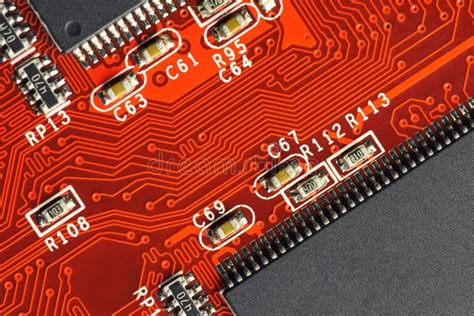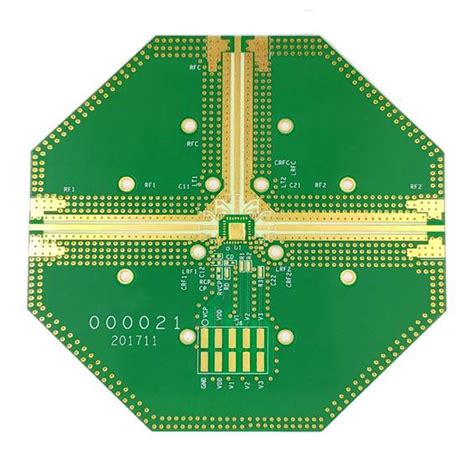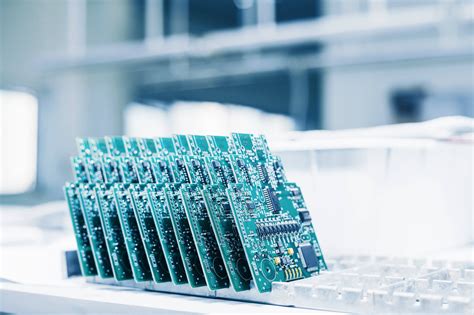Rapid SMT Assembly Innovations for Efficient Electronics Manufacturing
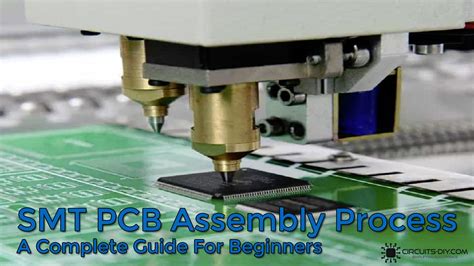
Key Takeaways
In the rapidly evolving world of pcb assembly, the integration of new techniques and technologies is imperative for maintaining competitiveness. One of the foremost insights driving this trend is the critical role of pcba innovations in enhancing manufacturing efficiency. By leveraging advanced methodologies, companies are able to significantly reduce production times while boosting overall quality. The introduction of automation and robotics has transformed traditional processes, enabling faster assembly lines that minimize human error and improve precision in component placement.
To illustrate the impact of these advancements, consider the following table that outlines key metrics comparing traditional and modern SMT assembly techniques:
| Metric | Traditional SMT Assembly | Rapid SMT Assembly |
|---|---|---|
| Average Production Time (hrs) | 40 | 20 |
| Defect Rate (%) | 5 | 1 |
| Labor Cost Reduction (%) | — | 20 |
| Automation Level (%) | 30 | 90 |
These figures reflect how adopting rapid SMT assembly practices can lead to substantial improvements in efficiency and cost-effectiveness. The focus on quality cannot be understated, as it ensures that products meet rigorous standards necessary for market success. Companies investing in pcba innovations are likely to establish a significant edge over their competitors, ultimately paving the way for sustained growth within the electronics manufacturing sector. As industries continue to pursue efficiency through technological advances, rapid SMT assembly will remain a pivotal area for innovation.
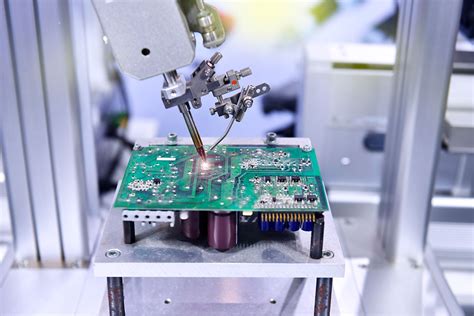
Introduction to Rapid SMT Assembly: Transforming Electronics Manufacturing
The landscape of electronics manufacturing is witnessing a significant transformation through rapid SMT assembly, a process that is reshaping how pcb assembly is conducted. This innovative approach focuses on enhancing efficiency by integrating advanced technologies and methodologies that streamline production processes. The introduction of high-speed equipment and precision tools has enabled manufacturers to significantly reduce the time required for the assembly of printed circuit boards (PCBs). Innovations such as laser inspection systems and automated soldering techniques have emerged, playing a critical role in boosting accuracy and minimizing defects in pcba—the production of assembled PCBs. By continually refining these processes, manufacturers are not only able to achieve faster turnaround times but also ensure the delivery of high-quality products that meet the growing demands of the market. Furthermore, an emphasis on sustainability within rapid SMT assembly practices has laid the groundwork for environmentally friendly manufacturing solutions, enabling companies to compete effectively on a global scale. In essence, this evolution towards rapid and efficient SMT assembly principles marks a pivotal shift in electronics manufacturing, offering distinct advantages that enhance overall productivity and quality.

Key Innovations Driving Efficiency in SMT Assembly
The landscape of SMT assembly has been profoundly transformed by several key innovations aimed at improving both speed and quality within the pcb assembly process. Advanced techniques such as machine vision systems are now integral to ensuring precision during placement, allowing for rapid identification and correction of errors that could hinder production timelines. Coupled with the implementation of flexible production lines, manufacturers can swiftly adapt to varying product demands, reducing downtime significantly. Another notable advancement is the rise of 3D printing technologies for component prototyping, which facilitates faster turnaround times for product development and enhances the overall efficiency of the pcba process. Additionally, integration of real-time data analytics has become crucial; it enables manufacturers to monitor production in real time and make informed decisions that streamline operations. Collectively, these innovations not only lower production costs but also bolster the reliability and functionality of electronic products, ensuring manufacturers remain competitive in a rapidly evolving market landscape.
Techniques to Enhance Production Speed in Electronics Manufacturing
In the realm of pcb assembly, enhancing production speed is crucial for maintaining a competitive edge. One of the most effective techniques involves the implementation of real-time data analytics that allows manufacturers to monitor the pcba process dynamically. By analyzing performance metrics, manufacturers can identify bottlenecks and inefficiencies promptly. Another innovative approach is the use of advanced soldering technologies, such as selective soldering and laser soldering, which significantly reduce cycle times and improve accuracy.
Moreover, optimizing the layout of assembly lines can lead to more streamlined workflows. The integration of modular workstations that can be reconfigured as needed ensures that companies can adapt quickly to changing demands without sacrificing efficiency. Furthermore, rigorous training programs for operators focus on best practices in handling equipment; well-trained staff can operate machinery more effectively, contributing to overall speed enhancements.
"Adopting a culture of continuous improvement empowers teams to innovate processes within the pcb assembly environment."
Embracing these advanced techniques not only enhances speed but also fosters an environment conducive to quality improvements and reduced operational costs. In conclusion, addressing production speed through targeted innovations forms a cornerstone of effective pcba manufacturing strategies today.

Quality Improvements in Rapid SMT Assembly Processes
In the realm of rapid SMT assembly, several advancements have been made that significantly enhance the quality and reliability of pcb assembly processes. One key innovation is the use of advanced inspection technologies. These technologies, such as automated optical inspection (AOI) and X-ray imaging, allow for real-time monitoring of assembled pcba boards, ensuring that defects can be detected and corrected earlier in the production cycle. By providing immediate feedback, manufacturers can drastically reduce the chances of faulty products reaching the market, thus improving overall quality.
Moreover, integrating machine learning algorithms into SMT processes assists in better predicting potential failures based on historical data. This predictive capability enables companies to preemptively address issues before they arise, leading to fewer reworks or scrapped boards. Additionally, optimizing the materials used in rapid SMT assembly also plays a crucial role; selecting high-quality solder paste and components can enhance durability and performance of pcba products.
Implementing rigorous quality control measures during each stage of production further contributes to maintaining high standards. For example, adhering to established protocols for each step—from soldering to final inspection—ensures consistency and reliability in the final output. With these advancements, companies not only achieve greater efficiency but also secure a competitive edge by ensuring that their products are synonymous with quality and performance in the rapidly evolving electronics landscape.
The Role of Automation and Robotics in SMT Efficiency
In the modern landscape of pcb assembly, the integration of automation and robotics has become a pivotal factor in enhancing efficiency and precision. These technologies significantly streamline production processes in pcba (Printed Circuit Board Assembly), allowing for faster turnaround times and reduced labor costs. Automated systems, such as pick-and-place machines, are designed to handle intricate tasks like component placement with unmatched accuracy, which minimizes errors often associated with manual handling. Furthermore, robotics can contribute to real-time monitoring of production lines, enabling quick adjustments based on feedback to maintain optimal performance levels. This not only ensures higher throughput but also leads to improved quality in the final products. By embracing automation within SMT assembly, manufacturers can enhance their competitive advantage, adapting swiftly to market demands while maintaining high standards of quality control. Ultimately, the synergy between robotics and human oversight paves the way for a transformative approach in electronics manufacturing, empowering companies to achieve greater efficiency and innovation.
Case Studies: Successful Implementations of Rapid SMT Technologies
In recent years, numerous companies have successfully adopted rapid SMT assembly technologies, showcasing impressive results in pcb assembly processes. For instance, one leading electronics manufacturer introduced a new pcba line that integrated advanced automation systems, resulting in a 30% reduction in production time. This case exemplifies how the use of automated pick-and-place machines can dramatically enhance accuracy and speed in the assembly process. Additionally, another case study highlighted a company that employed innovative process engineering techniques to streamline their production workflow. By implementing state-of-the-art solder paste printing methods and real-time monitoring systems, they not only improved the quality of their pcba but also minimized material waste by 25%. These success stories illustrate how adopting cutting-edge innovations in rapid SMT assembly can lead to significant enhancements in efficiency and quality, providing firms with a distinct competitive edge in the fast-paced electronics market. The implications are clear: companies leveraging these technologies are better positioned to meet evolving consumer demands while optimizing their manufacturing capabilities.
Future Trends in Rapid SMT Assembly and Their Impact on the Industry
As the electronics manufacturing landscape continues to evolve, the future of rapid SMT assembly is poised to be shaped by several significant trends. One of the foremost trends is the increasing adoption of intelligent automation and artificial intelligence, which plays a crucial role in optimizing pcb assembly processes. This integration allows for real-time monitoring and adaptive learning, enabling systems to adjust parameters dynamically to enhance production speed while maintaining high-quality standards. Furthermore, advancements in pcba technology are leading to more complex designs being assembled at a quicker pace without compromising reliability.
Another emerging trend is the growing emphasis on sustainability within SMT assembly practices. Manufacturers are now focusing on eco-friendly materials and processes that reduce waste and energy consumption, aligning with global environmental goals. This shift not only aids in regulatory compliance but also appeals to consumers who prioritize sustainability.
Additionally, the trend towards miniaturization of electronic components is driving innovation in soldering techniques and equipment that support finer pitch assemblies. Companies are investing in next-generation soldering technologies that ensure impeccable joint quality, even at smaller scales. Lastly, collaboration between design teams and production engineers during the pcb assembly phase is becoming increasingly important; this integrated approach leads to designs optimized for manufacturability, ultimately improving production efficiency and quality.
In summary, these trends are indicative of a broader shift towards enhanced efficiency, quality assurance, and sustainability in rapid SMT assembly processes, positioning manufacturers for competitive advantage in an ever-demanding global market.
Conclusion: Achieving Competitive Advantage through Rapid SMT Innovations
In today’s fast-paced electronics market, rapid SMT assembly innovations are pivotal for achieving a sustainable competitive advantage. By embracing advanced techniques and state-of-the-art technologies, manufacturers can significantly enhance the efficiency of their pcb assembly processes. The integration of automated systems streamlines production time, leading to quicker turnaround on pcba projects without compromising quality. Moreover, the adoption of innovative tools not only reduces operational costs but also increases precision in placements, resulting in higher-quality output. As companies strive to differentiate themselves, focusing on these rapid SMT innovations allows them to respond more effectively to customer demands and stay ahead of competitors. Ultimately, investing in these advancements fosters resilience and adaptability in the ever-evolving landscape of electronics manufacturing.
Conclusion: Achieving Competitive Advantage through Rapid SMT Innovations
In the rapidly evolving landscape of electronics manufacturing, rapid SMT assembly plays a pivotal role in ensuring that organizations maintain a competitive edge. The integration of innovative technologies in pcb assembly processes not only accelerates production timelines but also enhances the overall quality and reliability of the final products. By leveraging automation and state-of-the-art equipment, manufacturers can significantly reduce errors associated with manual handling, resulting in fewer defects in pcba. Moreover, the adoption of advanced materials and techniques facilitates real-time monitoring, allowing for immediate adjustments that optimize output. As companies continue to invest in these cutting-edge solutions, the ability to respond swiftly to market demands will become increasingly critical. Ultimately, embracing rapid SMT innovations is not just about improving processes; it is about redefining how manufacturers approach challenges within the electronics sector to foster sustained growth and market leadership.

FAQs
What is PCB assembly and why is it important?
PCB assembly, often referred to as PCBA, is the process of populating a printed circuit board (PCB) with electronic components. This step is crucial as it transforms a bare board into a functional electronic device, forming the backbone of various electronic applications.
What innovations are currently impacting rapid SMT assembly?
Recent innovations in rapid SMT assembly include enhanced solder materials and automated placement machines. These technologies significantly reduce production timelines while improving precision, thus ensuring that every pcb assembly process yields high-quality results.
How does automation influence SMT efficiency?
Automation in SMT processes accelerates production by allowing for quicker part placements and reducing human error. Smart machines equipped with artificial intelligence can adapt to changes in production needs, ensuring that pcba processes remain agile and efficient.
What role does quality control play in rapid SMT assembly?
Quality control is vital in rapid SMT assembly, as it ensures each board meets stringent standards. Techniques like real-time monitoring and inspections help identify defects early, ultimately enhancing the reliability of the final products.



